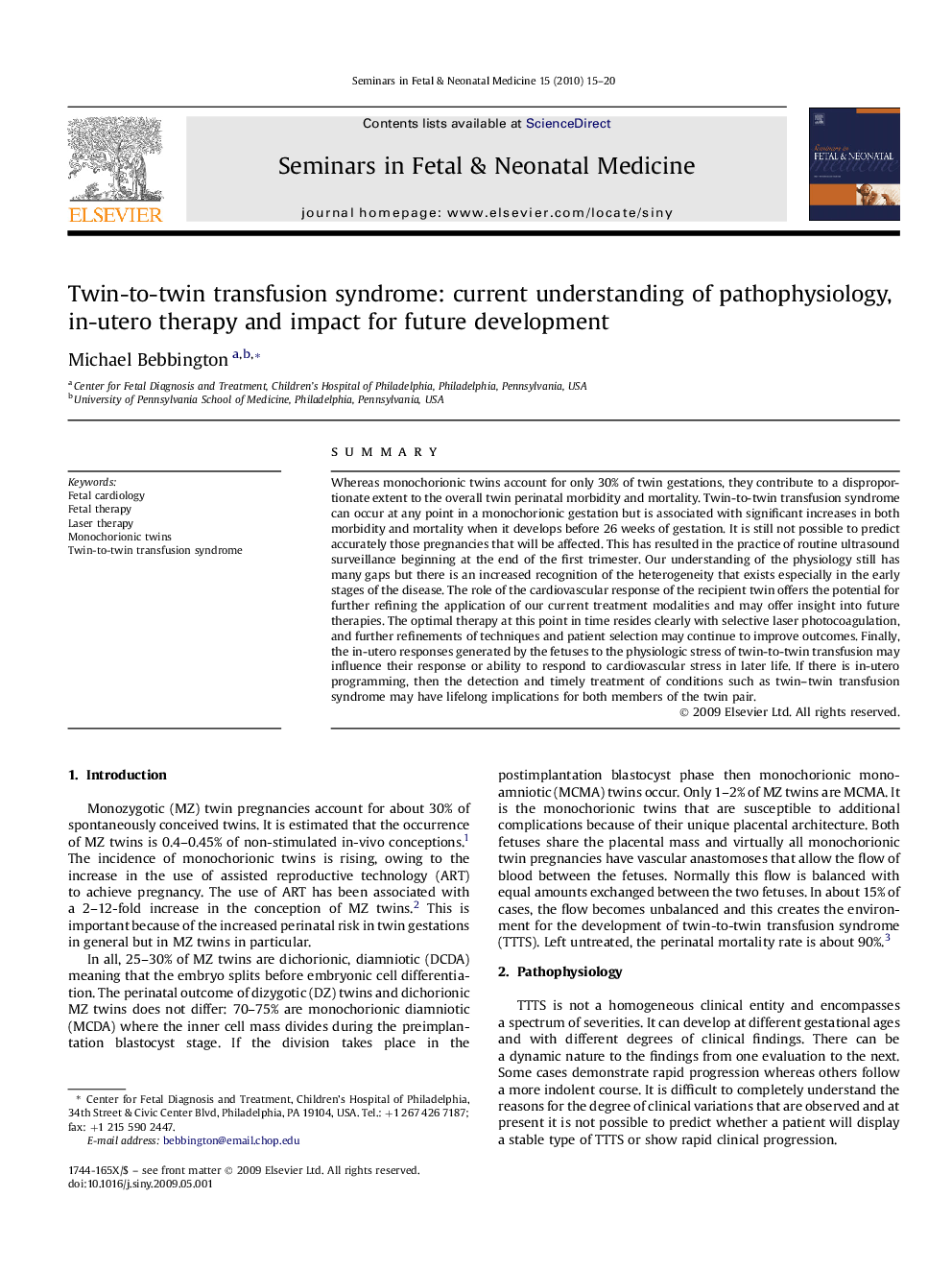| Article ID | Journal | Published Year | Pages | File Type |
|---|---|---|---|---|
| 3974221 | Seminars in Fetal and Neonatal Medicine | 2010 | 6 Pages |
SummaryWhereas monochorionic twins account for only 30% of twin gestations, they contribute to a disproportionate extent to the overall twin perinatal morbidity and mortality. Twin-to-twin transfusion syndrome can occur at any point in a monochorionic gestation but is associated with significant increases in both morbidity and mortality when it develops before 26 weeks of gestation. It is still not possible to predict accurately those pregnancies that will be affected. This has resulted in the practice of routine ultrasound surveillance beginning at the end of the first trimester. Our understanding of the physiology still has many gaps but there is an increased recognition of the heterogeneity that exists especially in the early stages of the disease. The role of the cardiovascular response of the recipient twin offers the potential for further refining the application of our current treatment modalities and may offer insight into future therapies. The optimal therapy at this point in time resides clearly with selective laser photocoagulation, and further refinements of techniques and patient selection may continue to improve outcomes. Finally, the in-utero responses generated by the fetuses to the physiologic stress of twin-to-twin transfusion may influence their response or ability to respond to cardiovascular stress in later life. If there is in-utero programming, then the detection and timely treatment of conditions such as twin–twin transfusion syndrome may have lifelong implications for both members of the twin pair.
